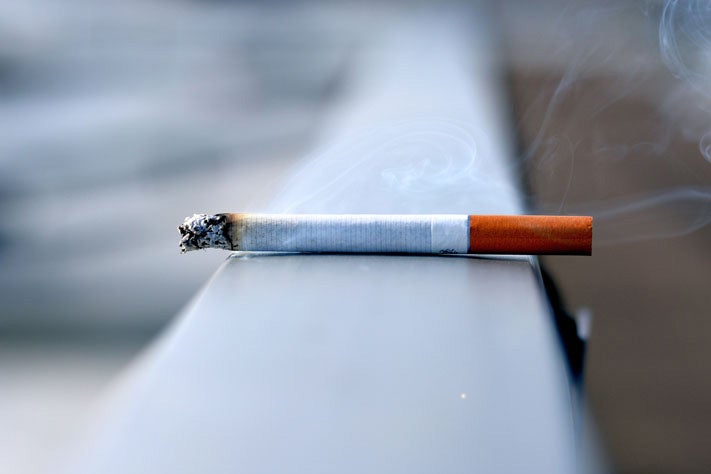Smoking
Why you should quit

In 2016, 12.2% of Australians aged 14 years or older smoked daily. Two of every three deaths in current long-term smokers can be directly attributed to smoking. Smoking causes an estimated 20% of the nation's cancer disease burden each year.
Smoking is the biggest preventable cause of cancer, accounting for 13% of cancer cases per year. It’s estimated that in 2013, there were 16,610 cancer cases and 9921 cancer deaths attributable to tobacco.1
Lung cancer is the leading cause of cancer death worldwide with most cases attributed to smoking. In Australia, about 90% of lung cancer cases in males and 65% in females are estimated to be a result of tobacco smoking. Smoking can also cause 15 other cancer types, including oral cavity, pharynx, oesophagus, stomach, bowel, liver, pancreas, nasal cavity and paranasal sinuses, larynx, uterine, cervix, ovary, urinary bladder, kidney, ureter and bone marrow (myeloid leukaemia).2
Studies have shown that risk of dying increases with the number of cigarettes smoked. Smoking just 10 cigarettes per day doubles your risk of dying and smoking more than 25 cigarettes a day increases your risk of dying four-fold compared to those who have never smoked. Current smokers are estimated to die an average of 10 years earlier than non-smokers.3
Tobacco smoke contains more than 7000 chemicals, over 70 of which are known to cause cancer. When you inhale cigarette smoke these chemicals enter your lungs and spread through your body via blood and lymph systems.
As soon as you quit smoking, there are immediate and long-term health benefits, even if you already suffer from smoking-related health problems. Quitting smoking reduces your risk of dying prematurely with quitting earlier resulting in greater reductions.
Chemicals in tobacco will also affect people who are exposed to your cigarette smoke. Second-hand or passive smoking poses health risks to adults similar to active smoking, and has also been associated with sudden infant death syndrome and asthma in children.
References
- Wilson, L.F, et al, How many cancer cases and deaths are potentially preventable. Estimates for Australia in 2013. International Journal of Cancer,2018 Feb 15; 142(4):691-701
- International Agency for Research on Cancer. IARC monographs on the evaluation of carcinogenic risks to humans, volume 100 E. A review of human carcinogens: Personal habits and indoor combustions. Lyon, France: IARC; 2012 Jan 1 Available from: https://monographs.iarc.fr/wp-content/uploads/2018/06/mono100E.pdf.
- Banks E., et al., (2015) Tobacco smoking and all-cause mortality in a large Australian cohort study: findings from a mature epidemic with current low smoking prevalence. BMC Medicine 13:38; 2015
Want to quit smoking?
